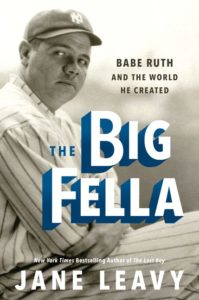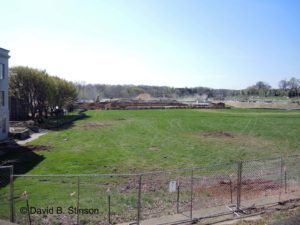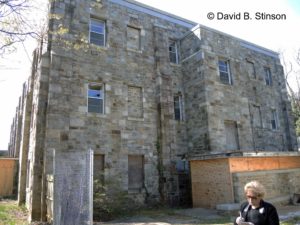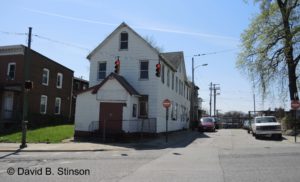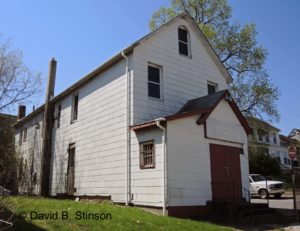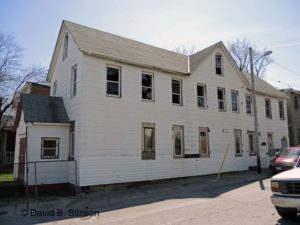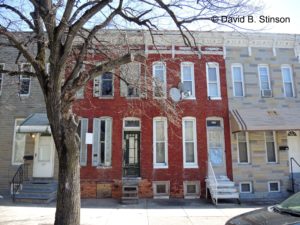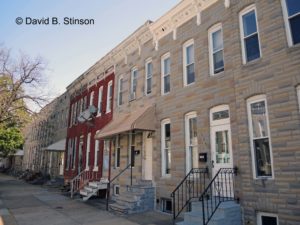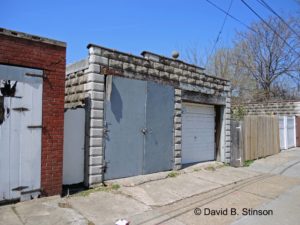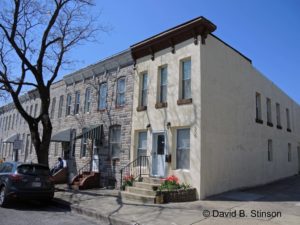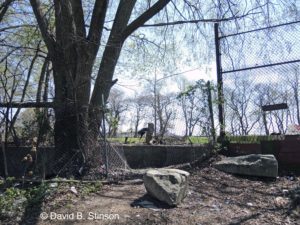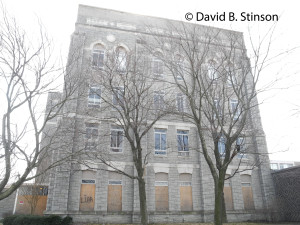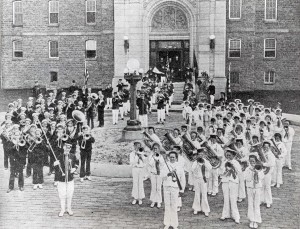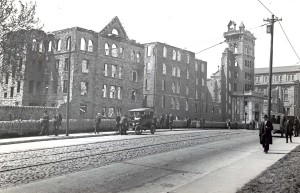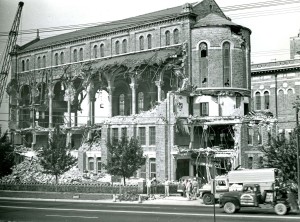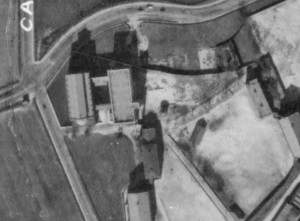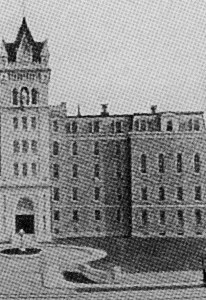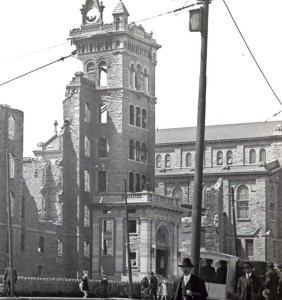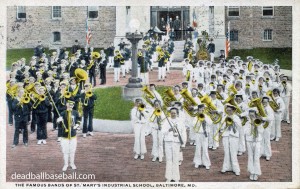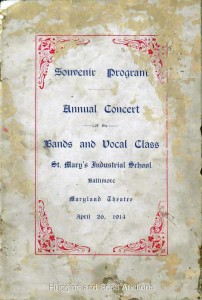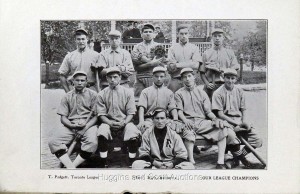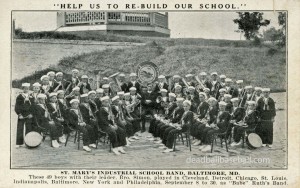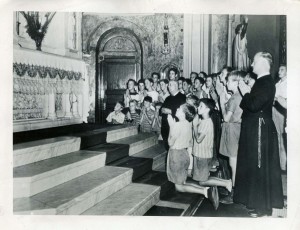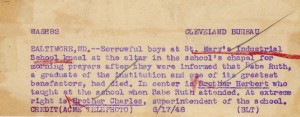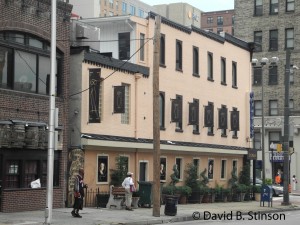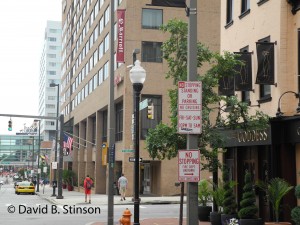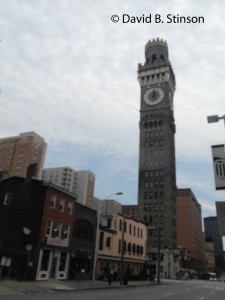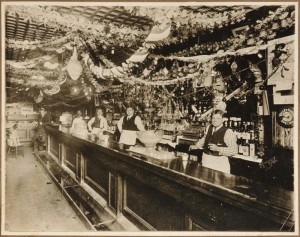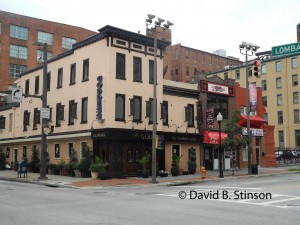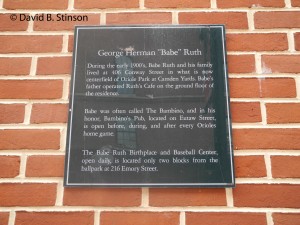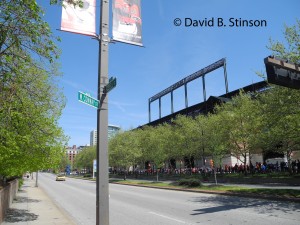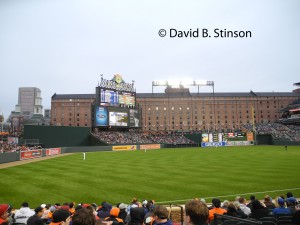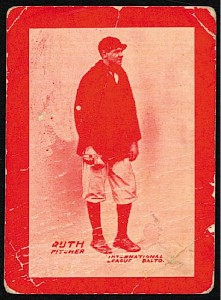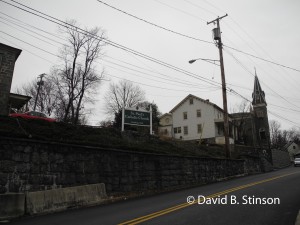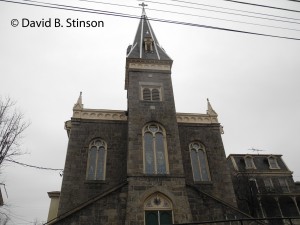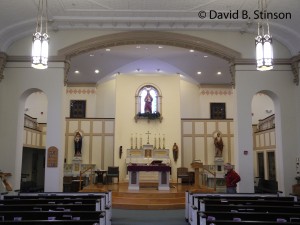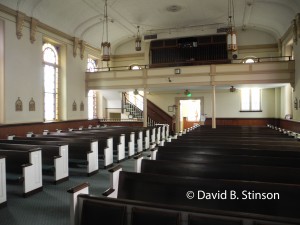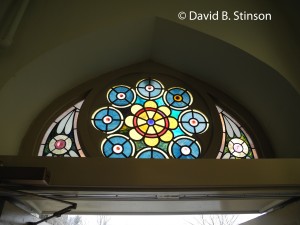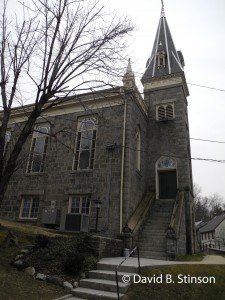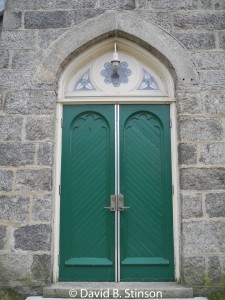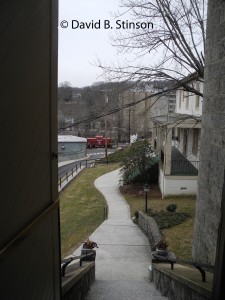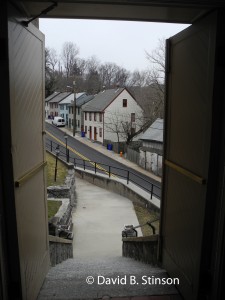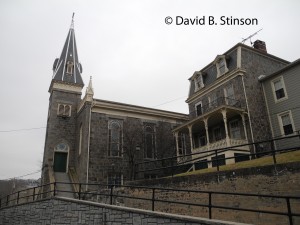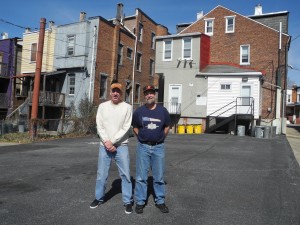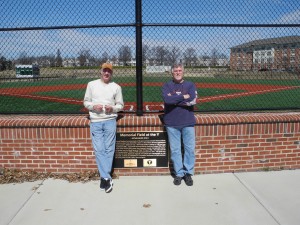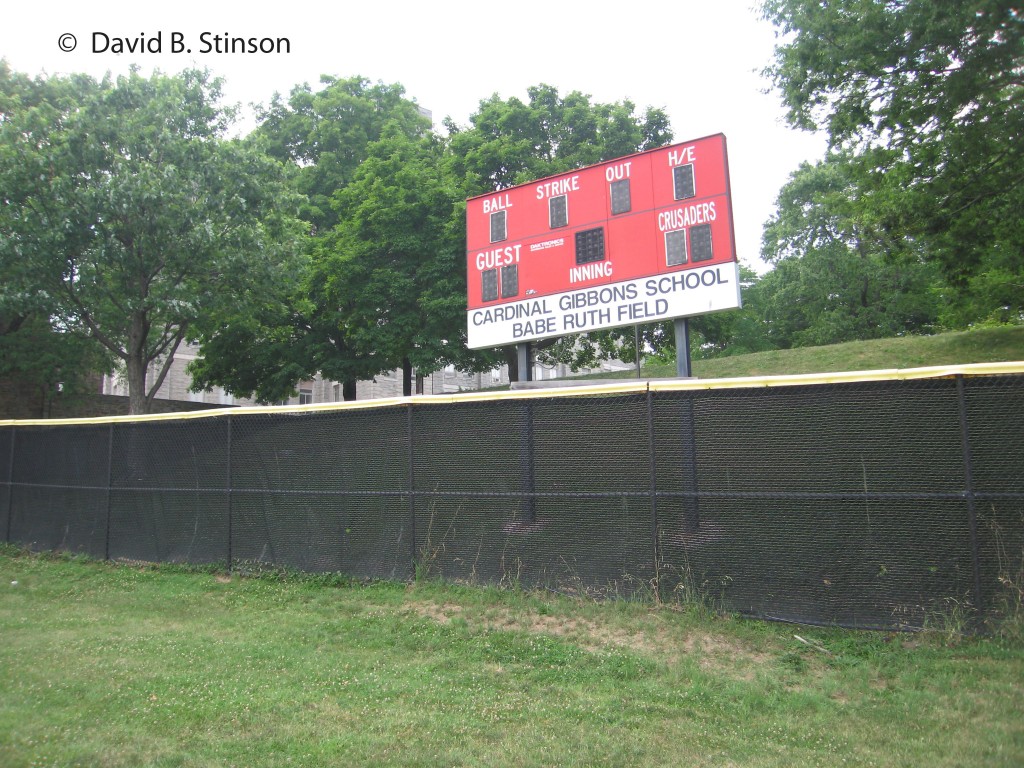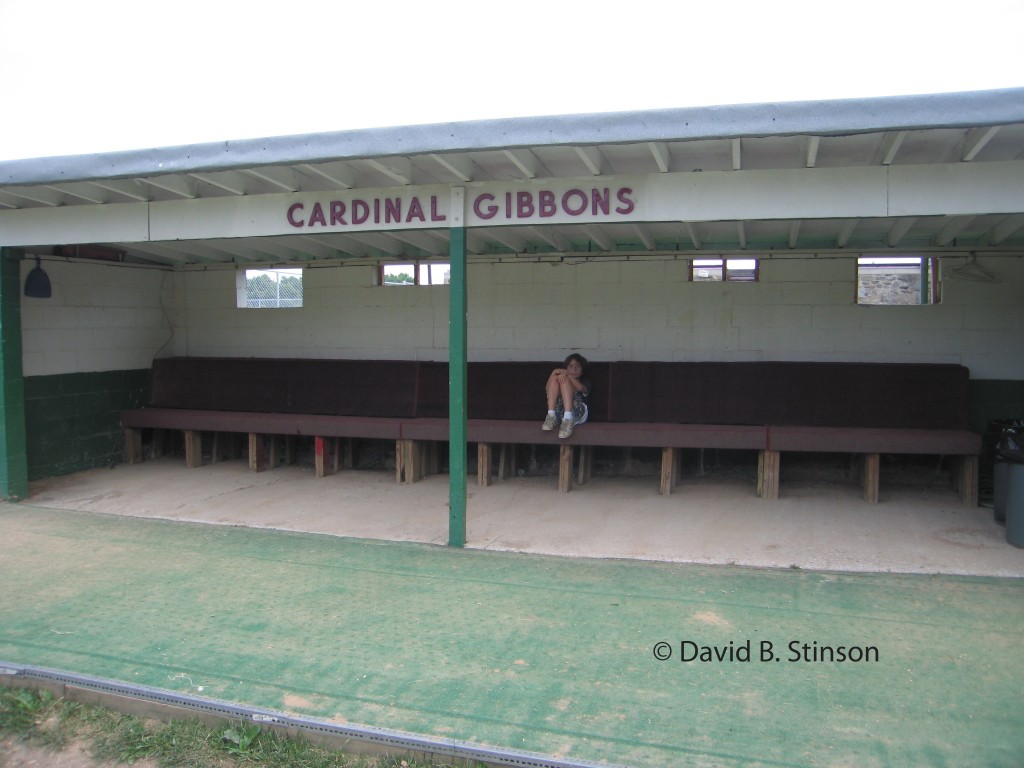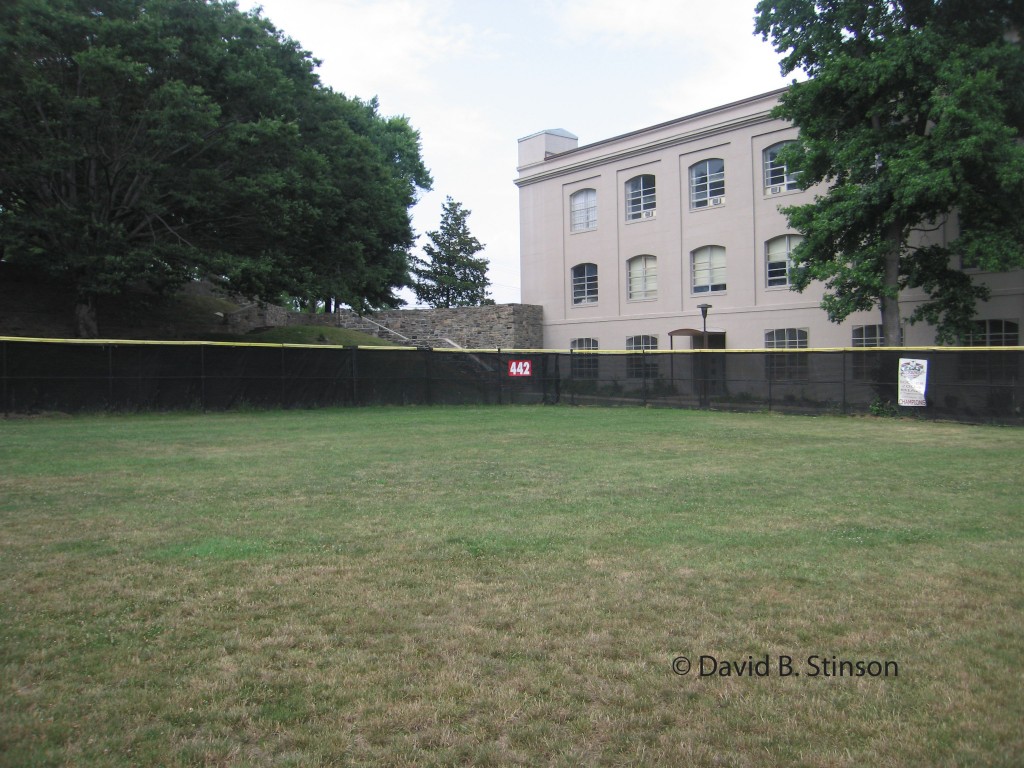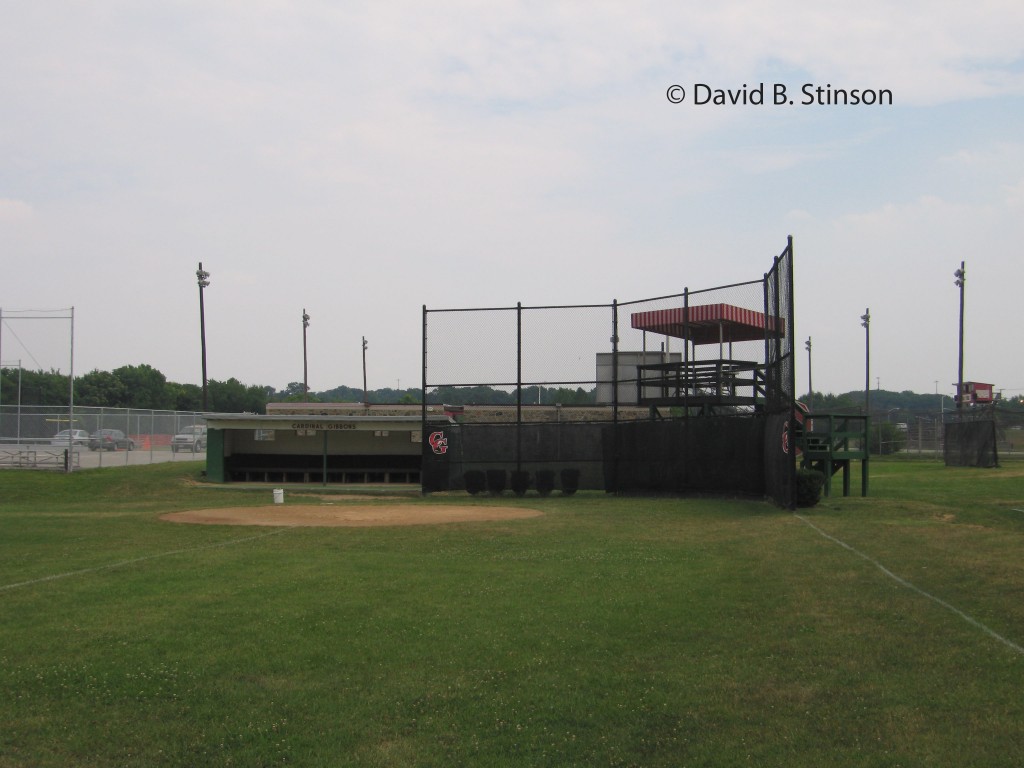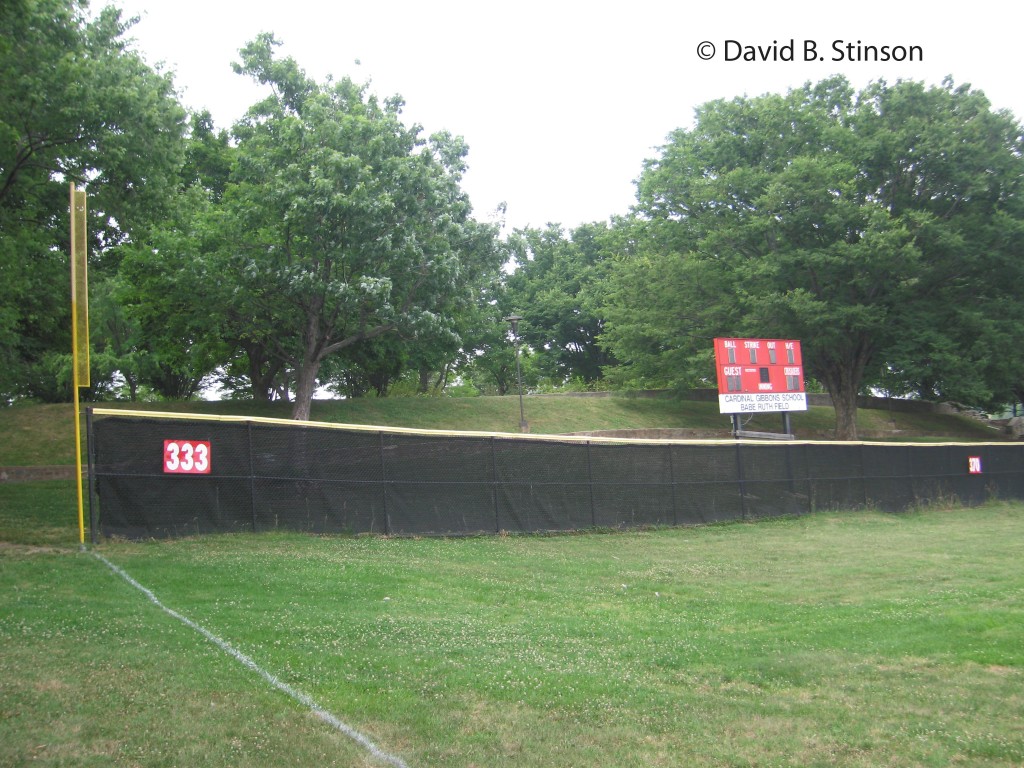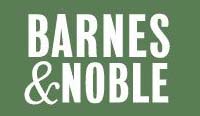Jane Leavy’s new book The Big Fella, Babe Ruth and the World He Created, is a fascinating look at the life of Babe Ruth, including his humble beginnings in Baltimore, Maryland. Ms. Leavy’s attention to detail, and her Herculean efforts to uncover unknown and long-forgotten facts about Babe Ruth’s life in Baltimore, helps bring the Big Fella’s formative years in Baltimore into focus, providing a clearer understanding of the years he spent in Baltimore and the impact those years had on his personality and ultimately on his trajectory to the pinnacle of the sports and entertainment world.
Researching and writing Big Fella consumed eight years of Ms. Leavy’s life, and the accolades she has received for her efforts, and the resulting book, are well earned. In April 2016, I had the good fortune of tagging along with Ms. Leavy as she toured Baltimore in search of Babe Ruth’s past.
Our first stop was the former site of St. Mary’s Industrial School for Boys, once located at 3225 Wilkens Avenue, just west of downtown Baltimore. In 1902, Babe Ruth was sent to live at St. Mary’s at the behest of his father, George Herman Ruth, Sr.
After St. Mary’s closed in 1950, the Archdiocese of Baltimore transformed the property into Cardinal Gibbons School, which opened in 1962 and closed in 2010. At the time of our visit, the site recently had been purchased by St. Agnes Hospital. The field where Babe Ruth once played baseball as a boy was in the process of being converted from grass to artificial turf under the direction of the Cal Ripken, Sr. Foundation.
One of the construction managers at the work site on the day of our visit was kind enough to show Ms. Leavy the construction plans for the field.
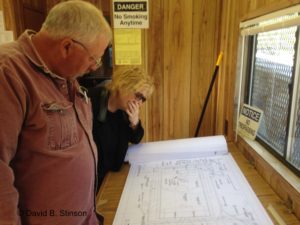
St. Agnes Hospital Construction Manager and Author Jane Leavy Viewing Renovation Plans for the Babe Ruth Field at the Former Site of St. Mary’s Industrial School, Baltimore, Maryland
The field is adjacent to the Industrial Arts Building, perhaps the most historically-important building still on the site, dating back to the days when Babe Ruth lived at St. Mary’s.

Baseball Field at St. Mary’s Industrial School for Boys, with Industrial Arts Building in Background, Baltimore, Maryland
In that building, Babe Ruth learned to make shirt collars, a trade the Xaverian Brothers who ran St. Mary’s taught Babe Ruth as part of his education there.
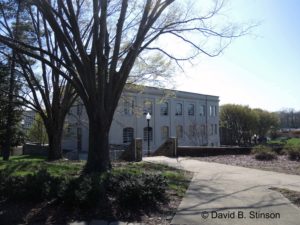
Industrial Arts Building Located at the Former Site of St. Mary’s Industrial School for Boys, Baltimore, Maryland
During our visit, Brian Cromer, a project manager and caretaker of the former St. Mary’s site, gave us a tour, including the Industrial Arts Building and the former Xaverian Brothers residence hall. The residence hall was constructed in the 1920s after a 1919 fire at St. Mary’s destroyed a majority of buildings at the school. The residence hall is constructed of stones salvaged from the fire.
Babe Ruth helped the Xaverian Brothers raise money to rebuild St. Mary’s. The large stone building in the background of the photo below was built in part from funds raised by Babe Ruth after the fire. One additional structure that predates the 1919 fire, and remains at the site, is a brick smoke stack seen in the photo below.
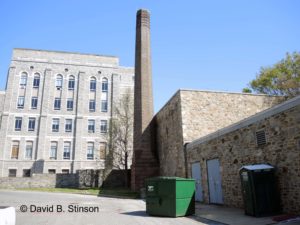
Brick Smoke Stack that Dates Back to the Time Babe Ruth Attended St. Mary’s Industrial School for Boys, Baltimore, Maryland
After finishing our tour of the the former St. Mary’s site, we drove just one mile northeast on Franklin Avenue to the house where Babe Ruth lived until he was two years old.
Located on the southeast corner of Frederick Avenue and Font Hill Road, the house once was owned by Babe Ruth’s paternal grandfather.
The house is located catercorner from Mount Olive Cemetery. The photos seen here were taken during our trip in April 2016. Since that time, the house was boarded up and its fate now seems uncertain. Given the history of the building, perhaps the City of Baltimore could recognize the significance of the structure and help encourage its preservation.
Our journey next took us to a half mile further east on Frederick Avenue to the Westside Shopping center, located between Frederick Avenue to the north and Wilkins Avenue to the south, at Catherine Street.
As Ms. Leavy notes in her book Big Fella, the site of this shopping center was once occupied by the William Wilkens & Co., Manufacturers of Steam-Curled Hair and Bristles. Babe Ruth would have passed this expansive industry and the stockyards that once surrounded the area while traveling Wilkens Avenue on his way to and from St. Mary’s.
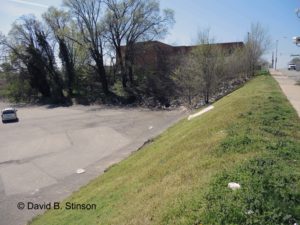
Catherine Street and Franklin Avenue, Behind Westside Shopping Center, Frederick Avenue, Baltimore, Maryland
The William Wilkens & Co. factory was located in a hollow. According to Ms. Leavy, pigskins and horsehides were placed in the sun to dry in an area of the property once known as Hogs Hair Hill.
One mile east of the former site of William Wilkens & Co., and five blocks from the eastern terminus of Wilkens Avenue, is Woodyear Street, where Babe Ruth lived from ages 2 to 6.
His family lived in a 12-foot wide row house at 339 South Woodyear Street. In the photo above, 339 is the red brick structure on the right, with white, wooden steps.
Babe Ruth’s uncle, John Ruth, lived with his family in the adjoining house at 341 South Woodyear Street (the row house with the metal awning to the right of 339 South Woodyear).
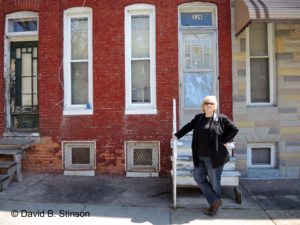
Author Jane Leavy Standing in Front of 339 South Woodyear Street, Baltimore, Maryland, Where Babe Ruth Once Lived
Babe Ruth’s father owned, with his brother John, the Baltimore Lightning Rod Works, which they ran out of the garage located in the backyard of their adjacent properties.
That garage still stands on the site, fronted by South Carey Street, across from the Mt. Clare Junction Shopping Center (the land the shopping center is on was once part of the Mount Clare railroad yard).
One can imagine young Babe Ruth playing in the back yard of the house and running alongside the garage behind his house.

Back yard of 341 South Woodyear Street and Garage (on right) where Babe Ruth’s Father and Uncle Made Lightening Rods.
It is remarkable that this structure still stands today, with no marker noting its historical importance.
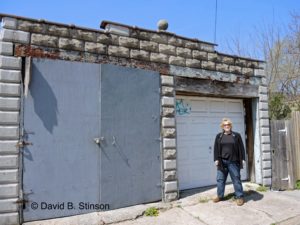
Author Jane Leavy Standing in Front of Garage Where Babe Ruth’s Father and Uncle Once Ran Lightening Rod Business
As Ms. Leavy detailed in her book Big Fella, Woodyear Street was a modest working class neighborhood. One other relative of Babe Ruth lived on the north side of street at 302 South Woodyear Street.
South Woodyear Street is located near Carroll Park, a 117 acre park and the third oldest public park in Baltimore.
With access to Carroll Park less than a block from his front door, it is easy to imagine Babe Ruth as a young boy, heading down the street toward the park.
Across Carroll Park, looking south, is downtown Baltimore. One can imagine a young Babe Ruth playing along the railroad tracks, and in the surrounding parkland.
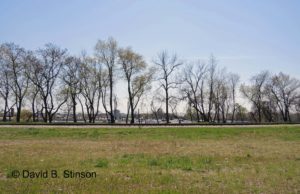
Railroad Tracks Near Carroll Park in Baltimore, Maryland, with Downtown Baltimore visible Past the Treeline
Jane Leavy’s Big Fella is an engrossing read, and Ms. Leavy has done Baltimore proud, shedding much light (both known and previously unknown) on the history of Baltimore and its famous son Babe Ruth. Touring Baltimore with Ms. Leavy in search of Babe Ruth’s past was a true pleasure and I feel fortunate to have been along for the ride.
Ms. Leavy will make two appearances in Baltimore during the coming two months, first at Babe Ruth Birthplace and Museum at 3 pm on Saturday, December 15, 2018, and then at Peabody Heights Brewery on Sunday January 20, 2019, during the SABR Baltimore Babe Ruth Chapter meeting. Come out and meet Ms. Leavy at either of these two Baltimore events and pick up a signed copy of Big Fella.

